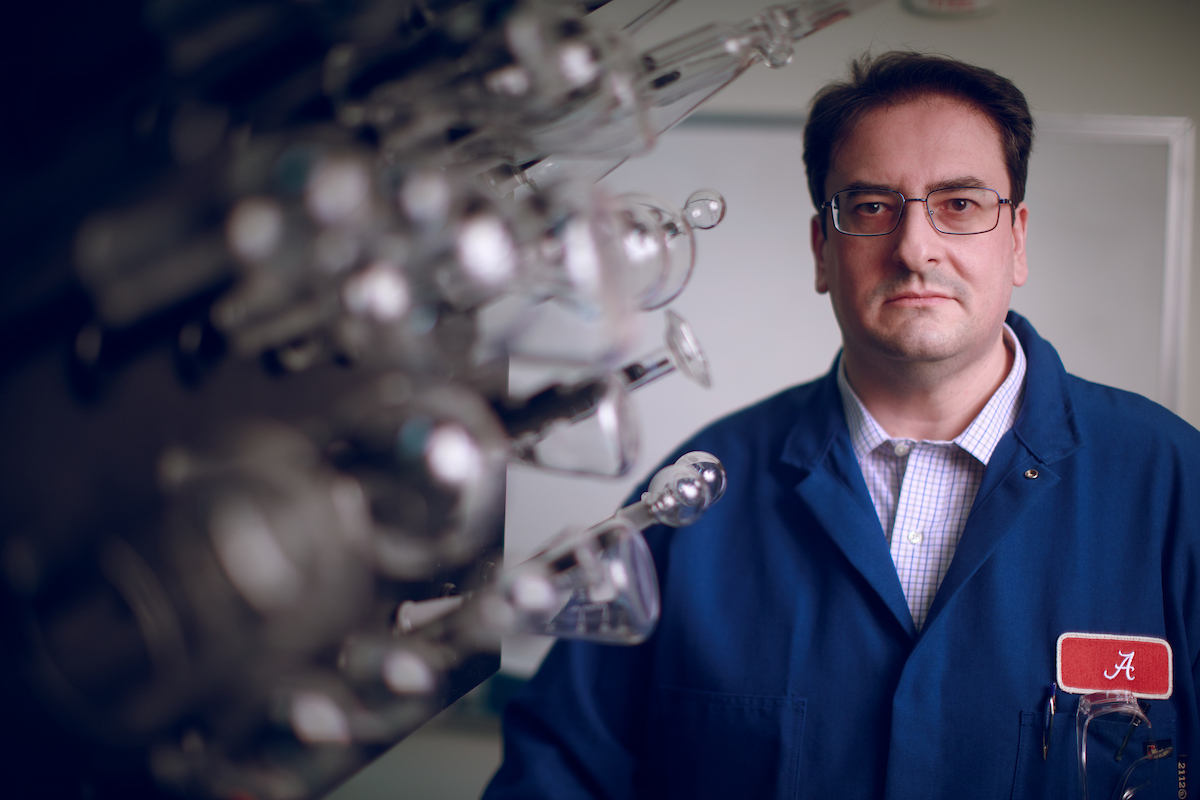Research involving The University of Alabama created an easier way to detect harmful levels of heavy metals in water, which could help improve human health by boosting detection efforts by regulatory agencies, water utilities and commercial fishing.
The new analytical method for detecting harmful levels of heavy metals such as cadmium, mercury and lead was created by combining chemical array sensing methods developed at UA with polymer synthesis capabilities at the University of Southern Mississippi, according to findings recently published in Advanced Functional Materials.
The work is part of a larger, multiyear collaboration led by the University of Mississippi and supported by the National Science Foundation to develop advanced polymer-based, selective sensing technologies for detecting and analyzing pollutants in the coastal aquatic ecosystems of the Gulf of Mexico, which host important fisheries, aquaculture, trading ports, and off-shore oil exploration and production industries.
The new method proved to be unusually robust and sensitive even in complex and challenging samples, down to the extremely low concentrations relevant for environmental monitoring applications in fresh- and saltwater, said Dr. Marco Bonizzoni, UA associate professor of chemistry and biochemistry.
“Our method for these analyses uses less complex instrumentation, yet achieves sensitivity similar to established lab-based standard techniques,” Bonizzoni said. “Additionally, our system is simpler and more rugged than existing techniques, potentially opening the path towards development of a portable device for and point-of-sampling measurements.”
At low levels, heavy metals are ubiquitous in the environment and some are essential nutrients for the ecosystem. At increased levels, mostly from human intervention, they threaten human, animal and ecosystem health. Exposure to heavy metals has been linked to neurological disease, organ failure and cancer.
Methods for their rapid and simple detection are a scientific and technological priority. Water utilities regularly monitor these potential contaminants in municipal water. Government regulatory agencies track heavy metals in waters as a proxy for potential contamination of marine life such as fish sold for consumption.

Current methods require lugging water samples taken on location back to a lab for analysis, which is time consuming and requires additional measures to ensure the sample isn’t contaminated. The new method could simplify this process greatly by allowing for direct on-site measurements.
For now, researchers demonstrated they can simplify analysis by testing samples taken from the site of the Deep Water Horizon oil spill in the Gulf, gathered by a group led by Dr. Alan Shiller from Southern Mississippi. The site near the destroyed oil rig and subsequent massive oil spill into the ocean in 2010 released heavy metals into the environment.
Former UA graduate student Dr. Michael Ihde, now a faculty member at Williams College, led the Bonizzoni group’s efforts to combine their method for using an array of receptors in a chemical sensor with the polymer synthesis capabilities from a group led by Dr. Jason Azoulay at Southern Mississippi and his graduate student Joshua Tropp.
Researchers prepared bright fluorene-based light-emitting charged polymers with appended metal binding groups, and studied their interactions with metal pollutants, developing methods for their ultrasensitive detection and discrimination.
“Through the collaboration, we made new polymers, we combined them in a physical sensing system, and we measured complex and challenging samples with it,” Bonizzoni said.
After demonstrating this proof of principle, the research team will focus on streamlining the procedure to fit inside a portable sensing system that could be operated by most anyone as a self-contained testing device deployed on a boat or, possibly, on a buoy that passively and continuously monitors the water; however, that future is several steps away.
Contact
Adam Jones, UA communications, 205-348-4328, adam.jones@ua.edu
